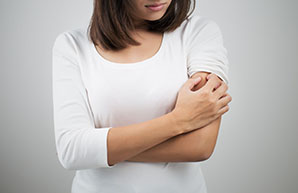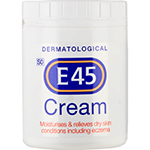Winter brings with it more than just cold weather, for many eczema sufferers it brings exacerbated symptoms too. “The most severe and debilitating symptom is an itch, which is associated with extremely dry skin,” says Dr Ian Webster, a dermatologist based in Somerset West. This itch is usually accompanied by a rash and inflammation, and typically affects the folds of the arms, the backs of the knees, the wrists and hands, and the face.
The patches affected will appear very dry, scaly or thickened and, in some people, it may produce patches of lighter or darker skin pigmentation.
What causes eczema?
Unlike colds and flu, which spread more easily in the winter months due to people staying indoors in close proximity to each other and thereby coming into contact with the virus more easily, eczema is not the result of a virus or even a bacterial infection at all.
While the exact cause of eczema remains unknown, it is thought to be an overreaction of the body’s immune system to a perceived irritant.
So why is it worse in winter?
Cold weather is not a direct cause, but it does create the conditions that contribute to flare-ups. Dr Webster says, “In the winter, especially in the interior of South Africa, the temperature drops, and when this occurs there is a drop in humidity. Lower humidity means drier skin.”
Heaters and air conditioners can also dry out the air – and your skin along with it, meaning winter comes with a double dose of dehydration. Other possible triggers include allergens (dust mites, pets or moulds – spending more time indoors during winter increases exposure to these), irritants like soaps and detergents, perspiration and scratchy or tight-fitting clothing.
What can you do about it?
“The most important thing is to only wash with a mild, fragrance-free, glycerine-based soap,” says Dr Webster. “Avoid normal bath soaps, which usually have a fragrance, are very harsh and also further dry out the skin.”
‘Air dry’ or pat skin gently with a towel rather than rubbing. And don’t wait too long after washing to moisturise with a bland, fragrance-free moisturiser – try to apply it within three minutes to ‘lock in’ the moisture from your bath or shower.
Wear breathable cotton clothing and, whatever you do, try not to scratch. A portable home humidifier may put some moisture back into the air of your living spaces.
Which treatments are best?
“The mainstay of treatment for an eczema flare-up is topical corticosteroid creams and these vary in strength from a very mild one-percent hydrocortisone, which may be bought over the counter without a prescription, to stronger topical corticosteroid cream that require a prescription,” explains Dr Webster. “There are also newer non-cortisone anti-inflammatory creams that are available – but only with a doctor’s prescription.”
In severe cases, injectable corticosteroids may be used, but these drugs are associated with greater side effects.
On top of the constant itching, there are also risks involved with not properly treating an eczema flare-up. “All of us carry bacteria on our skin but patients with eczema tend to carry more of the bacteria staphylococcus aureus,” explains Dr Webster. “With an eczema flare-up, one often gets a secondary bacterial infection and also possibly a secondary viral infection such as herpes simplex.” A bacterial infection may require treatment with antibiotics to clear it up.
IMAGE CREDIT: 123rf.com
FEATURED PRODUCT: E45 body cream
Suffering from a serious dry skin condition such as eczema? Make use of the convenience of online shopping to stock up on E45 body cream which moisturises and relieves dry skin conditions.


